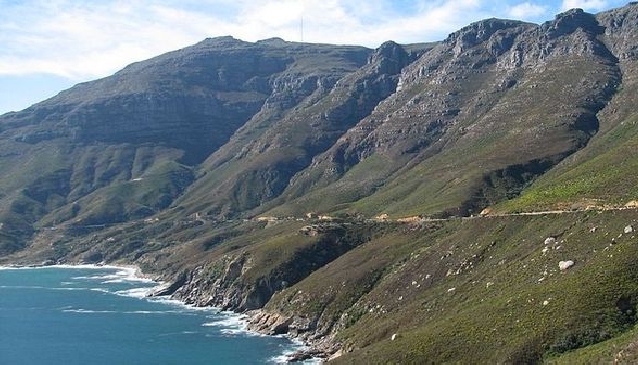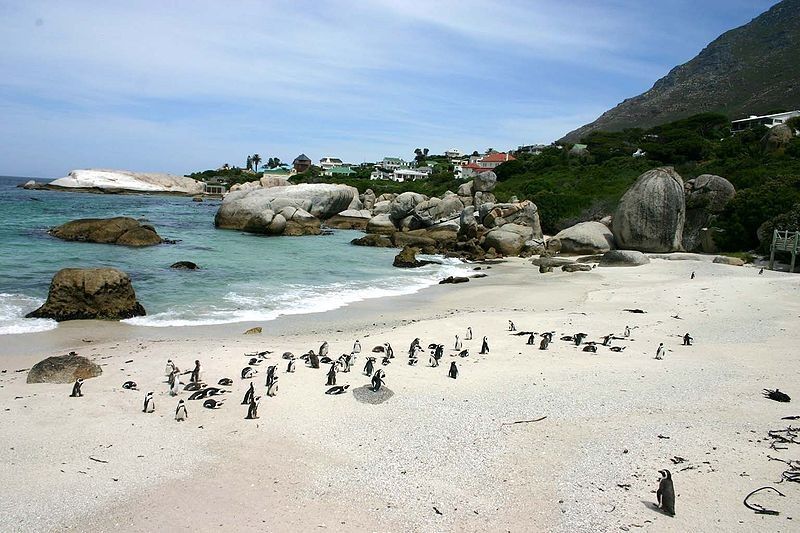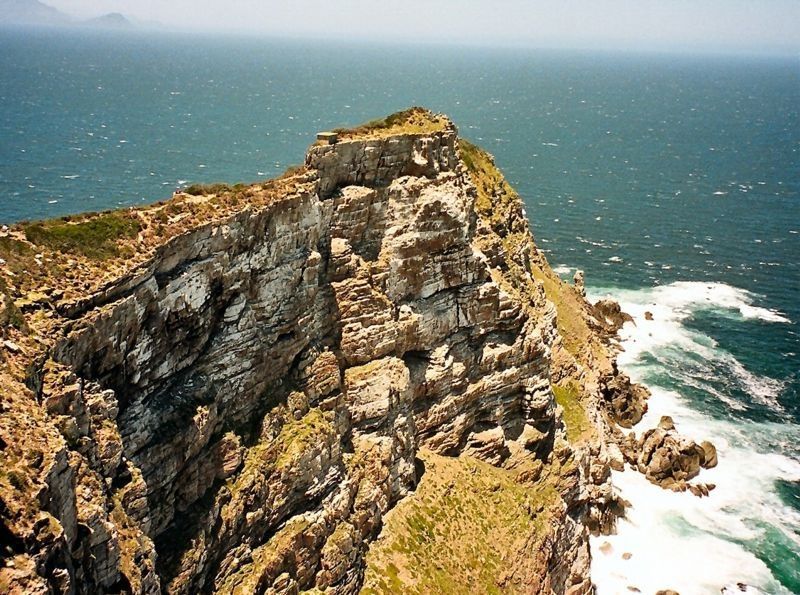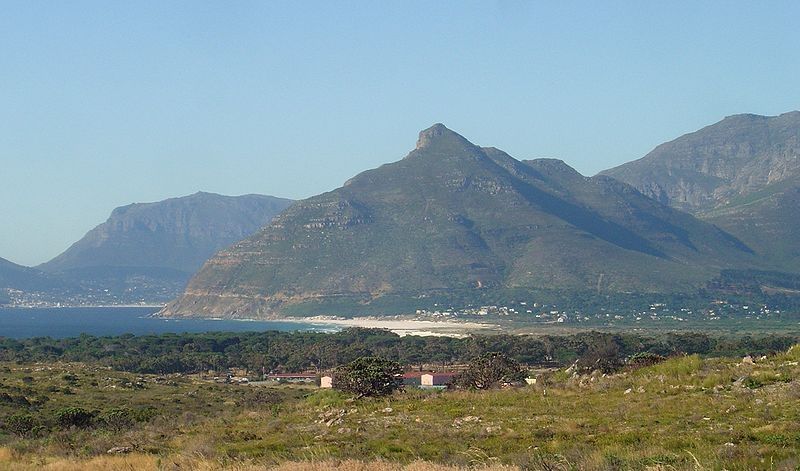(Don't) get straight to the Point

A visit to Cape Town is not complete without a lazy Sunday afternoon drive to Cape Point. Few road trips in the world serve up such dramatic and diverse ocean views, as you wind your way through the quaint towns and fishing villages that have made False Bay famous. And with a huge variety of things to see and do along the way, the good news is that there is so much more to the southern tail of Africa than the point itself.
This land is not only covered with mountains, but also boasts numerous unique towns and beautiful sights. The western and eastern coast of Cape Point each has its own character and a scenic drive or two to make the experience fully worthwhile. The energetic explorer might be able to fit this all into one day, but we propose a two-day approach.

Boulders Bay
Day one: Quiet drives and countryside
Chapman’s Peak Drive is rather well known for its rocky, and occasionally dangerous, cliffs. It commences from Hout Bay and takes you down the western coast of Cape Point. Perhaps the most popular route around the area, this Cape Town icon curls sharply around the slopes overlooking the Atlantic Ocean while the steep cliffs tower to the left.
Its history of avalanches can be seen where the road has been fixed and secured from future rock falls, and these notch the drive up from lazy to exciting. The views of the ocean are magnificent, so be sure to stop at the lookout points. Between June and November, look out for the Southern Right Whale as it tends to wade close to the shore during this time.
To arrive at this side of Cape Point in a more relaxed fashion, follow Ou Kaapse Weg (roughly translated to ‘Old Cape Drive’) from the city. It picks its way along the inland and winds between a series of peaks on either side. The mountainous surroundings make it easy to forget that the sea is just over the hill. Coming down, take the turnoff right to Noordhoek, the town where these two roads meet.
Cruising down the narrow, tree-lined lanes, smallholdings scattered on either side, you are now in Cape Town’s own piece of sophisticated, coastal countryside. Road signs with horses on are more popular than stop signs, and should be taken seriously as horses have the upper hand around these parts. Many horse-riding companies are stationed here and offer ample opportunity for a different manner of touring around the area.
As any farmland should, Noordhoek boasts its own, quaint village, hidden in one of the many nooks the main road makes. Fresh goods, scrumptious cake and hearty meals are the order of the day, followed by a stroll down the many art and craft shops across the way. The children not running around on the plain of grass are playing in the playground, rounding off the perfect village feel.
Following the main road on eventually brings about Noordhoek Beach, one of the longest sandy stretches along Cape Point’s coastline. It reaches all the way to Kommetjie, a quiet holiday town further South. Lounge the afternoon away in the sun and dare a dip in the icy waters.

Cape Point
Day two: Full-on tourist exploring
Turning left where the M3 ends near Polsmoor Prison gives you the choice of taking Main Road or Boyes Drive to enter the string of towns and beaches along the eastern coast of Cape Point. Main road will give you a glimpse of Muizenberg, with the notoriously long Sunrise Beach, while Boyes Drive will take you around closer to the Muizenberg peak, where a couple of bushy trails lead to the top for a special view of the sea and surroundings.
Each of the towns dotted along this side of the coast pride themselves on their unique attractions and each is well worth exploring, so pack your camera and enthusiasm and prepare to be amazed.
First up is Kalk Bay. This is probably Cape Town’s most stylish and trendy fisherman’s town with a series of antique stores, bookstores, bakeries and ice cream shops housed in renovated buildings along the main road. Steep cobblestoned alleyways lead up in between the buildings to the houses, but save your energy for the towns that hold more history and prominent architecture.
Pulling up at the Kalk Bay harbour is a definite must as, although small, it is still fully active. If you happen to come along early enough, you can buy fish fresh off the boats and experience this particular rush of excitement. During the afternoon, the modest boats anchor in line and visitors enjoy traditional fish and chips at the water’s edge.
Adjacent to Kalk Bay is Fishhoek, the suburbia of Cape Point. Mainly a retirement town, Fishhoek used to be known as a dry zone, which means that the selling of alcohol was prohibited. Nowadays, the small number of bars and restaurants serve alcohol, but you won’t find a bottle store in town. Fishhoek is also known for its sheltered beach and brightly painted bathing houses facing the beachfront.
Following the road heading south along the coast, you’ll pass a few diving spots and finally reach Simonstown. This is a town of history, the place Simon van der Stel, one of the first explorers to reach Africa, used as a harbour during the winter months as it is sheltered from the strong northwestern winds that rule the Cape during this time.
This is also the base for the South African navy, and a few giant navy ships can always be seen anchored at the dockyard. Naturally, Simonstown is rich with museums and cultural sites, as well as historic buildings found when climbing cobblestoned steps similar to those in Kalk Bay.
Many interesting stores and hotels are dotted along the main road, in renovated cottages that were built in Victorian times. At Jubilee Square, the waterfront of Simonstown, different kinds of boats are anchored. These are mostly yachts from the adjacent yacht club, and the harbour creates an interesting contrast to that of Kalk Bay. Take a walk around the wooden pathway, past the giant whale sculpture and down the jetty, or explore the tiny shopping mall’s African arts and crafts stalls.
Commencing south, the final stop is Boulders Beach. A registered nature reserve, this is a popular nesting beach for the African Penguin. Beachgoers bathe on one spot of sand while Penguins waddle around on the sand and boulders across the water. This is truly a worthwhile experience and it’s amazing how calm the Penguins are with having people hang out on their beach. Feel the difference in the water, where the oil on the Penguins’ skin gives your own body an oily layer.
View On the Road to Cape Point in a larger map

Chapman's Peak
This concludes one busy and one very relaxed day of exploring Cape Point’s must-sees. Do watch the weather forecast before you head off though, because if the South Easter decides to blow, you’ll be hanging on to your hat no matter how sheltered the beaches may seem.